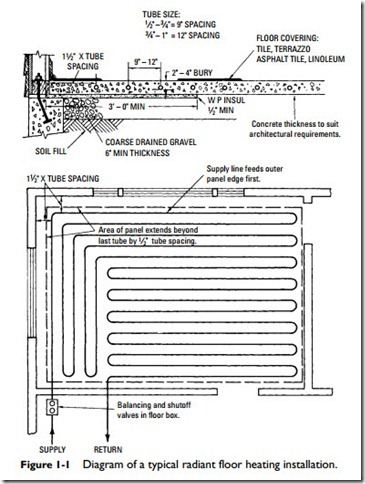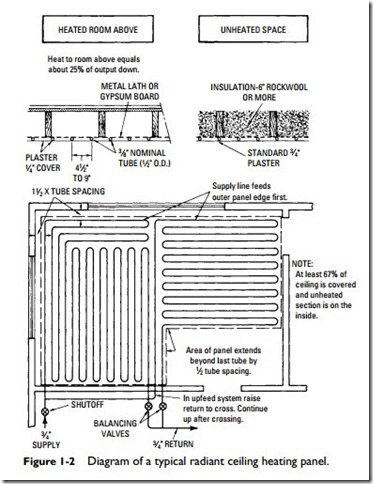Ceiling Panel Systems
The advantage of a ceiling panel is that its heat emissions are not affected by drapes or furniture. As a result, the entire ceiling area can be used as a heating panel. Ceiling panels are recommended for rooms or space with 7-foot ceilings or higher. A ceiling panel should never be installed in a room with a low ceiling (under 7 feet) because it may produce an undesirable heating effect on the head.
In multiple-story construction, the use of ceiling panels appears to be more desirable from both the standpoint of physical comfort and overall economy. The designed utilization of the upward heat transmission from ceiling panels to the floor of the area immediately above will generally produce moderately tempered floors. Supplementing this with automatically controlled ceiling panels
will result in a very efficient radiant heating system. Except directly below roofs or other unheated areas, this design eliminates the need for the intermediate floor insulation sometimes used to restrict the heat transfer from a ceiling panel exclusively to the area immediately below. It must be remembered, however, that when intermediate floor insulations are omitted, the space above a heated ceiling will not be entirely independent with respect to temperature control but will necessarily be influenced by the conditions in the space below. A typical ceiling installation is shown in Figure 1-2.
Apartment buildings and many office and commercial structures should find the ceiling panel method of radiant heating most desirable. In offices and stores, the highly variable and changeable furnishings, fixtures, and equipment favor the construction of ceiling panels, to say nothing of the advantage of being able to make as many partition alterations as desired without affecting the efficiency of the heating system.

